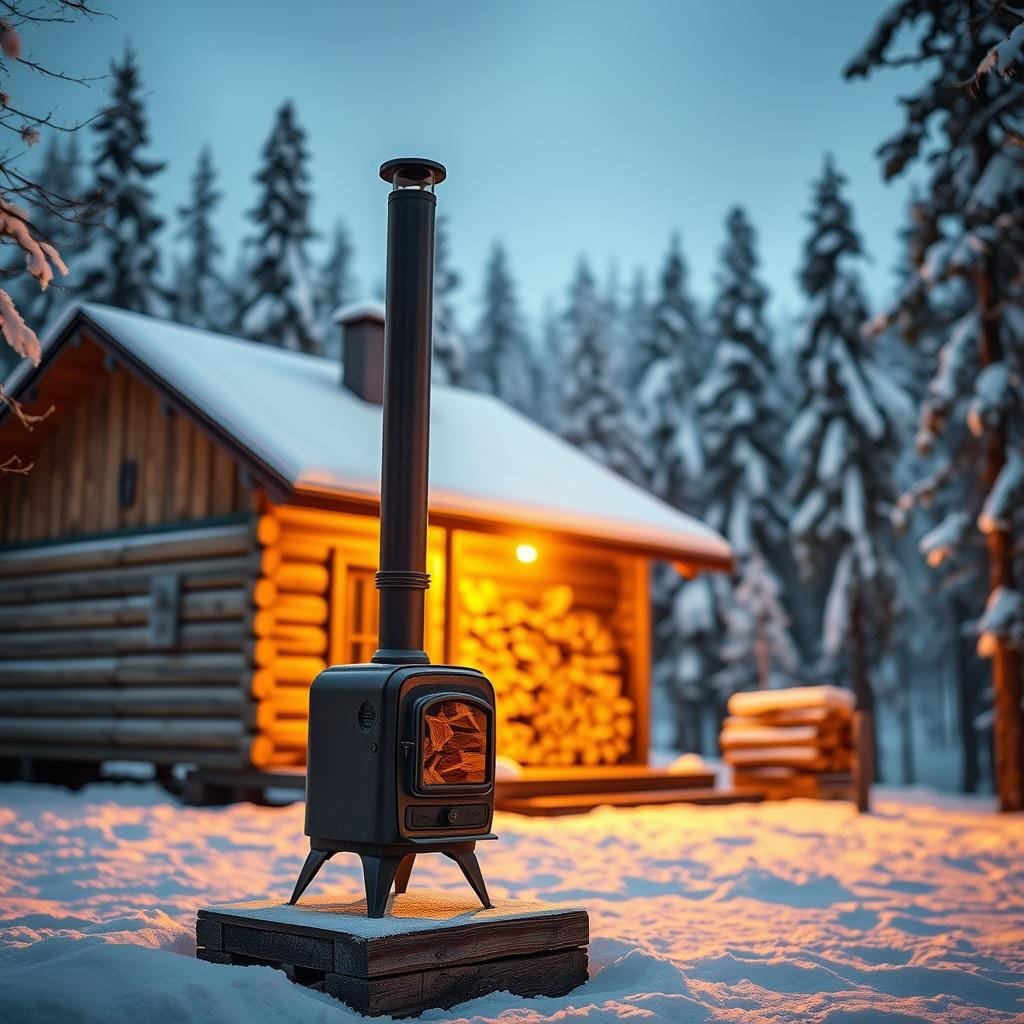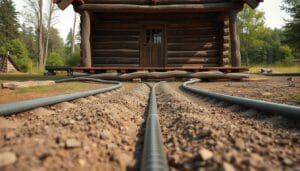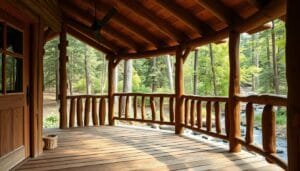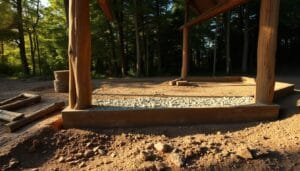Owning a remote retreat brings a special kind of freedom. But when winter arrives, keeping your space warm becomes a top priority. Traditional systems that rely on the grid simply won’t cut it in a secluded location.
This guide is here to help you navigate the world of resilient warmth. We will look at a variety of methods to generate comfortable heat without being tied to public utilities.
Finding the right heating solution depends on your specific situation. The size of your property, local climate, and your budget all play a big role. Many people seek a reliable source of warmth that works even during a power outage.
From modern technology to classic methods, there are several excellent options available. Our goal is to help you find a system that provides cozy comfort for your off-grid cabin all year long.
Understanding Your Heating Needs in Off-Grid Cabins
The secret to a warm, cozy cabin isn’t just the heater; it’s how well the building holds heat. A significant part of a typical home’s energy use goes toward heating. This makes efficiency your top priority.
Start by checking your insulation. Properly insulated exterior walls create a thermal barrier. This barrier keeps warm air inside. It dramatically reduces your overall heating needs.
Assessing Energy Efficiency and Cabin Insulation
Identify where heat loss occurs. Windows are a major culprit. Invest in weatherstripping and insulated shades. These upgrades help your space retain warmth.
Seal air leaks around doors and windows with caulking. This step is crucial to minimize heat loss. It stops cold drafts from making a room feel chilly. Your system won’t have to work as hard.
| Common Heat Loss Area | Primary Cause | Effective Solution |
|---|---|---|
| Windows & Doors | Gaps and poor seals | Weatherstripping and draft stoppers |
| Exterior Walls | Insufficient insulation | Foam board insulation |
| Electrical Outlets | Small air leaks | Foam gasket seals |
Seasonal Considerations for Optimal Comfort
Think about how you use your retreat. Is it a year-round home or a seasonal getaway? This affects your heating strategy. Full winterization is needed for constant use.
Knowing your cabin’s square footage and insulation levels helps. It allows you to calculate the exact power requirements for comfort. Improving energy efficiency often gives a better return than buying a bigger unit.
Exploring Natural and Renewable Heat Solutions
The sun, earth, and wind hold immense potential for generating reliable warmth without utility bills. These methods tap into endless, clean resources.
They can significantly lower your long-term costs. Let’s look at some of the most effective natural options available.
Solar and Passive Heating Techniques
Solar heating is a beautifully simple concept. It uses solar heat that enters through large, south-facing windows.
This solar heat warms up thermal mass materials inside. A concrete floor or stone wall will absorb and retain heat during the day.
At night, these materials slowly release the stored heat. This passive solar heating method provides free warmth.
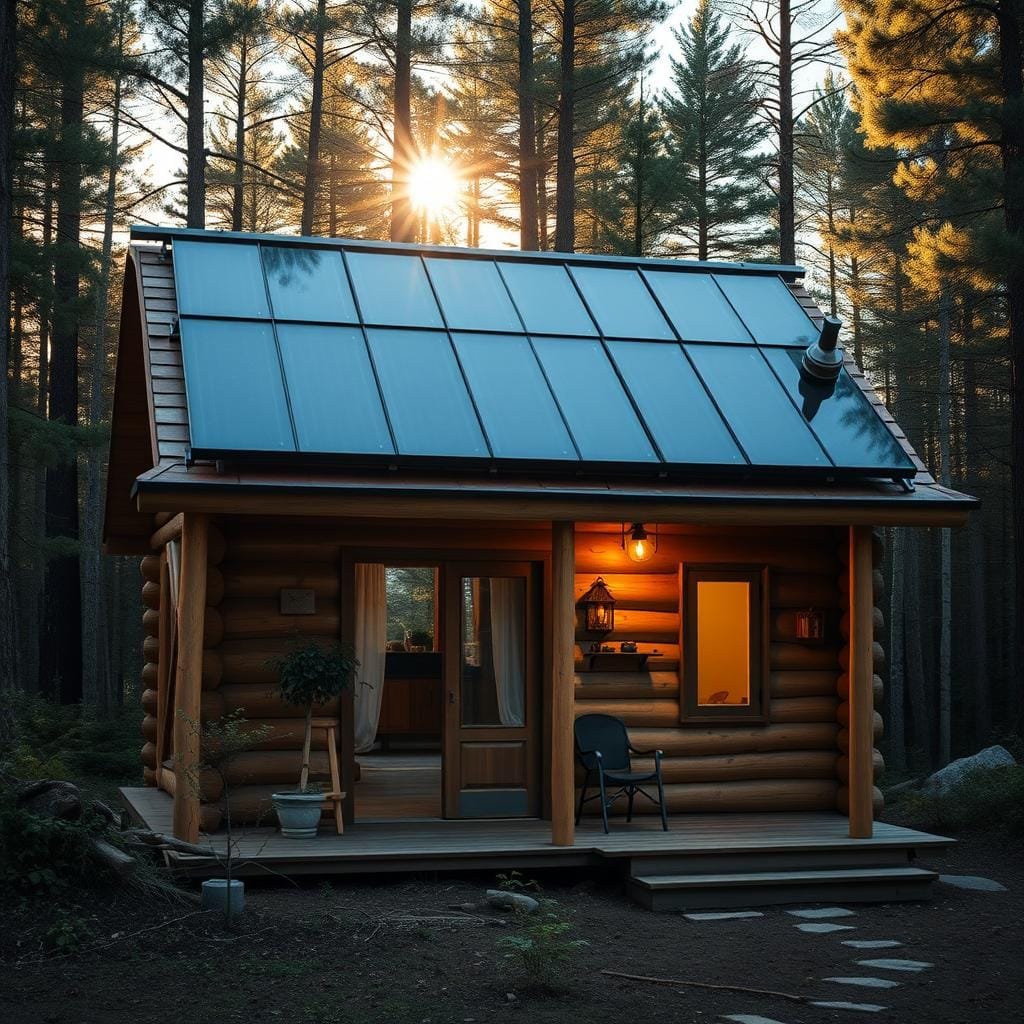
For larger spaces, it works best as a supplement. It reduces the load on your main heating system.
Geothermal and Wind Power Options
Geothermal energy uses the earth’s constant temperature below the surface. A ground-source pump moves this stable heat into your property.
It’s one of the most efficient systems you can install. The initial investment is high, but savings are substantial.
Wind power is another excellent choice, especially in winter. When sunlight is scarce, a small turbine can generate electricity.
This electricity can run various appliances. Combining these sources creates a resilient off-grid setup that provides consistent heat.
Best Alternative Heating for Cabin Solutions
When selecting a primary warmth solution for your remote property, three systems consistently stand out for their reliability and performance. Each offers unique benefits that suit different situations and preferences.
Your choice will depend on factors like fuel availability, maintenance willingness, and initial investment. Understanding these systems helps you make an informed decision.
Comparing Natural Gas, Wood Stove, and Pellet Systems
Natural gas systems provide consistent, controllable warmth with efficiency ratings around 70-80 percent. A 35K BTU wall unit costs approximately $2,000, while larger 55K BTU forced air systems run about $3,000 installed.
These gas solutions work well when your property has access to utility lines. However, many rural locations lack this infrastructure.
Wood stove technology has heated properties for centuries. It offers independence from utility networks and uses locally sourced fuel. The ambiance of real wood fire adds cozy comfort.
Pellet stoves represent a modern evolution of wood stove technology. They burn cleaner and achieve higher energy efficiency. These units use compressed wood pellets made from recycled materials.
Available in different sizes, larger pellet stoves can warm an entire home. They do require regular maintenance including hopper filling and ash cleaning. This option provides excellent heat as one of the reliable alternative heat sources.
Advanced Heating Systems and Modern Technologies
For those seeking a high-tech approach to off-grid comfort, advanced systems offer impressive capabilities. These modern solutions prioritize efficiency and smart control.
They represent a significant leap from basic equipment. Let’s explore two leading categories of innovative warmth technology.
Heat Pumps vs. Traditional Heating Equipment
Modern heat pump technology has advanced dramatically. Ductless split systems combine heating and air conditioning in one unit.
This heating cooling dual functionality is a major advantage. A model like the 20.5 SEER Carrier heat pump provides exceptional climate control.
It can generate heat down to about 5°F. However, its performance drops in extreme cold. A key limitation is its dependence on electrical power.
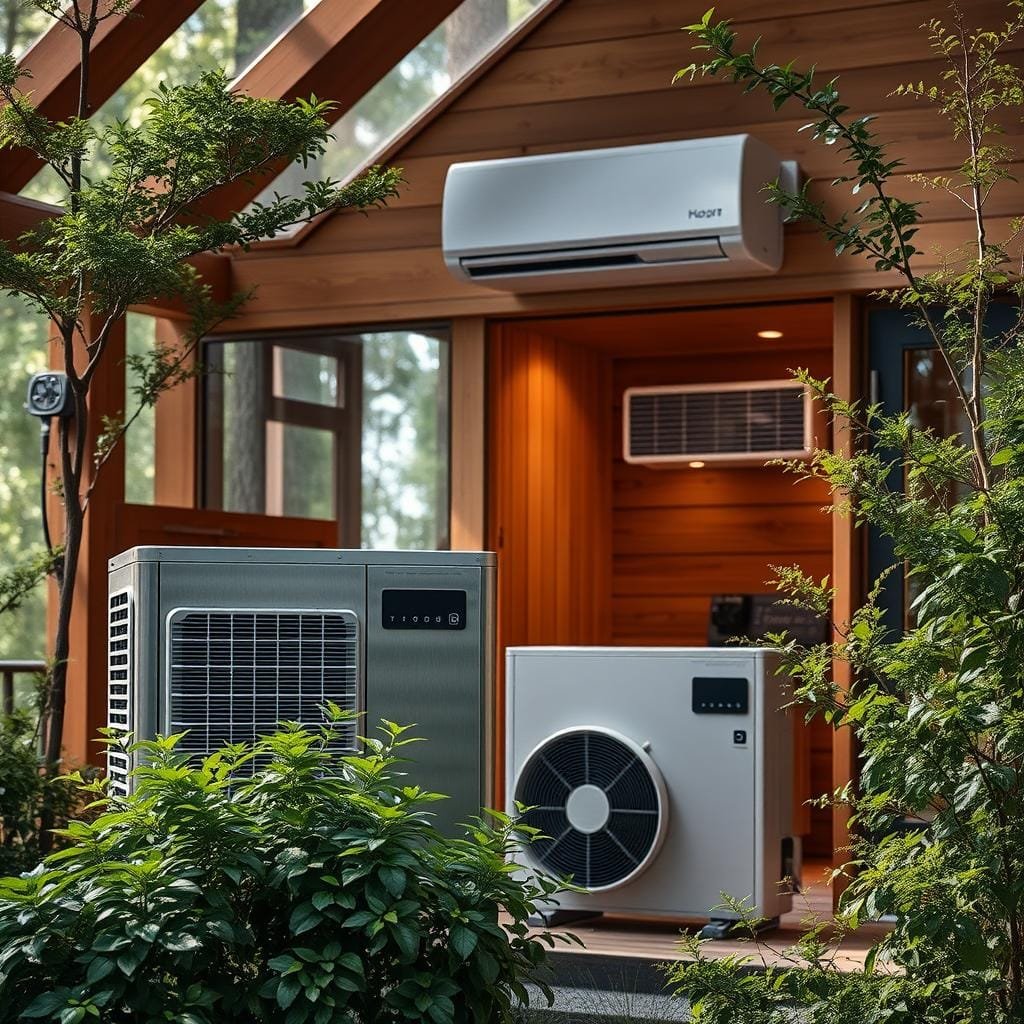
Advanced features like freeze protection mode are valuable. This setting circulates warm air with minimal energy use. It helps prevent pipes from freezing when the property is vacant.
When connected to smart thermostats, you gain remote control. You can adjust temperatures before you arrive. This offers peace of mind and enhanced efficiency.
Innovations in Catalytic and Gas Heater Systems
Catalytic heaters are another innovative heating system. They use natural gas or propane with a special catalyst.
A platinum-coated plate speeds up a chemical process to create heat. This method does not involve combustion, so it produces no harmful gases.
These gas heater units are very safe for indoor spaces. They generate warmth without an open flame. This makes them suitable for areas with limited ventilation.
Like any sophisticated equipment, they need regular maintenance. Both catalytic heaters and heat pump systems excel in daily efficiency. Traditional methods often provide greater reliability during extended power outages.
Innovative DIY and Emergency Heating Methods
Creative do-it-yourself methods can provide reliable emergency warmth when traditional systems fail during power outages. These solutions use common household items to generate temporary heat for your space.
Creative DIY Heater Ideas and Burner Can Options
A simple candle heater uses tea lights and terracotta pots to create effective emergency heat sources. The clay pots trap and radiate warmth into the surrounding air.
Alcohol heaters offer another practical option for temporary warmth. You only need a metal can, rubbing alcohol, and a toilet paper roll to create this functional device.
Biofuel burner cans provide convenient emergency heating that can warm surfaces or an entire room. Choosing biofuel ensures cleaner burning with fewer harmful fumes.
Heated rocks represent a traditional method to heat room spaces effectively. Warm large stones outdoors and bring them inside to radiate comforting warmth.
When using any emergency heat sources, always prioritize safety with proper ventilation. Keep flammable materials away from all alternative heat devices.
Eco-Friendly Heating Strategies for Lower Energy Costs
Making smart choices about warmth in your remote retreat can lead to significant savings while protecting the environment. Eco-friendly approaches reduce both your carbon footprint and monthly expenses over time.
Modern pellet stoves represent an excellent advancement in renewable warmth technology. They achieve higher energy efficiency than traditional wood burning units. These systems burn cleaner while producing substantial heat.
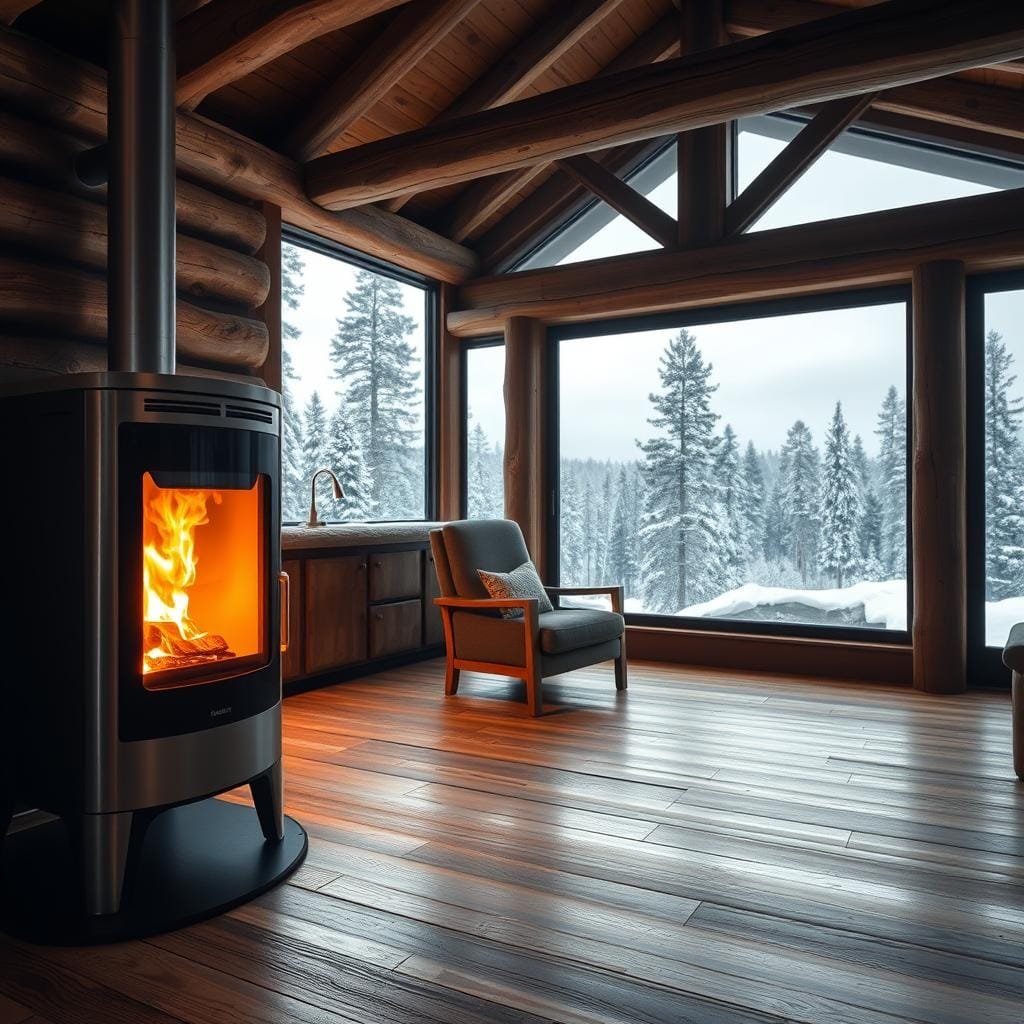
The pellets are typically made from compressed wood waste and organic materials. This makes them a sustainable fuel choice. While the initial investment is higher, the long-term cost savings make them worthwhile.
Electric heating often becomes the most expensive option for off-grid properties. This is especially true when relying on generators or battery banks. Gas, wood, and pellet systems typically offer more economical operation.
| Heating Type | Initial Cost | Annual Operating Cost |
|---|---|---|
| Pellet Stove | $$$ | $$ |
| Wood Stove | $$ | $$ |
| Natural Gas | $$$ | $$$ |
| Electric Heating | $ | $$$$ |
Choosing systems that use locally available fuels like wood reduces transportation expenses. This further lowers both environmental impact and overall cost. The higher upfront investment in efficient equipment pays for itself over several years.
Strategic efficiency improvements allow smaller systems to maintain comfort. Proper insulation and zone control minimize energy requirements. This approach keeps ongoing expenses manageable while providing reliable warmth.
Safety and Maintenance for Alternative Heating Systems
Protecting your home and family is the most critical aspect of using any independent warmth system. Proper procedures ensure your equipment provides comfort without risk.
Always start by reading the manufacturer’s instructions for your specific type of unit. This knowledge is your first line of defense.
Ensuring Proper Ventilation and Carbon Monoxide Detection
Combustion-based systems, like a natural gas gas heater or stove, require excellent airflow. They produce carbon monoxide, an odorless, dangerous gas.
Install battery-operated carbon monoxide detectors in key areas. They provide an early warning if levels become unsafe. Also, keep a window slightly open when using certain units to allow fresh air to circulate.
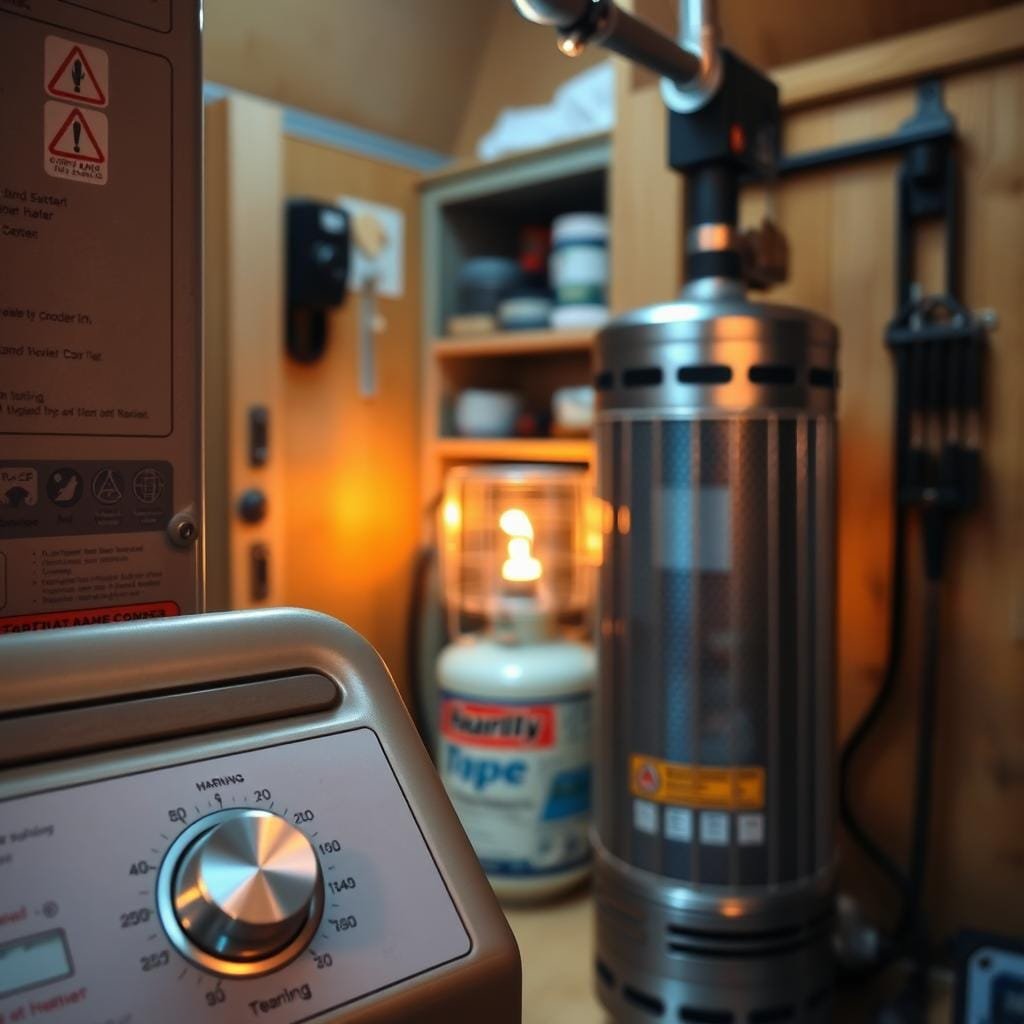
In case you smell gas or a detector alarms, act immediately. Shut down the system, ventilate the space, and seek professional help before restarting.
Routine Maintenance and Insulation Tips
Regular maintenance keeps your system efficient and safe. Different equipment needs different care schedules.
Fuel storage is also part of good maintenance. Keep propane tanks and other fuels away from ignition sources. Store them in a cool, well-ventilated area.
| System Type | Key Maintenance Task | Recommended Frequency |
|---|---|---|
| Gas Heater | Professional inspection & vent cleaning | Annually |
| Wood/Pellet Stove | Ash removal & component check | Before each season |
| Catalytic Heater | Catalyst plate inspection | Per manufacturer specs |
Sticking to a schedule prevents problems. It ensures your system generates reliable heat safely for years. Proper maintenance is an investment in your peace of mind.
Comparing Costs and Efficiency Across Different Systems
The true expense of keeping your space comfortable involves more than just the initial purchase price. You need to consider both equipment costs and long-term operational expenses.
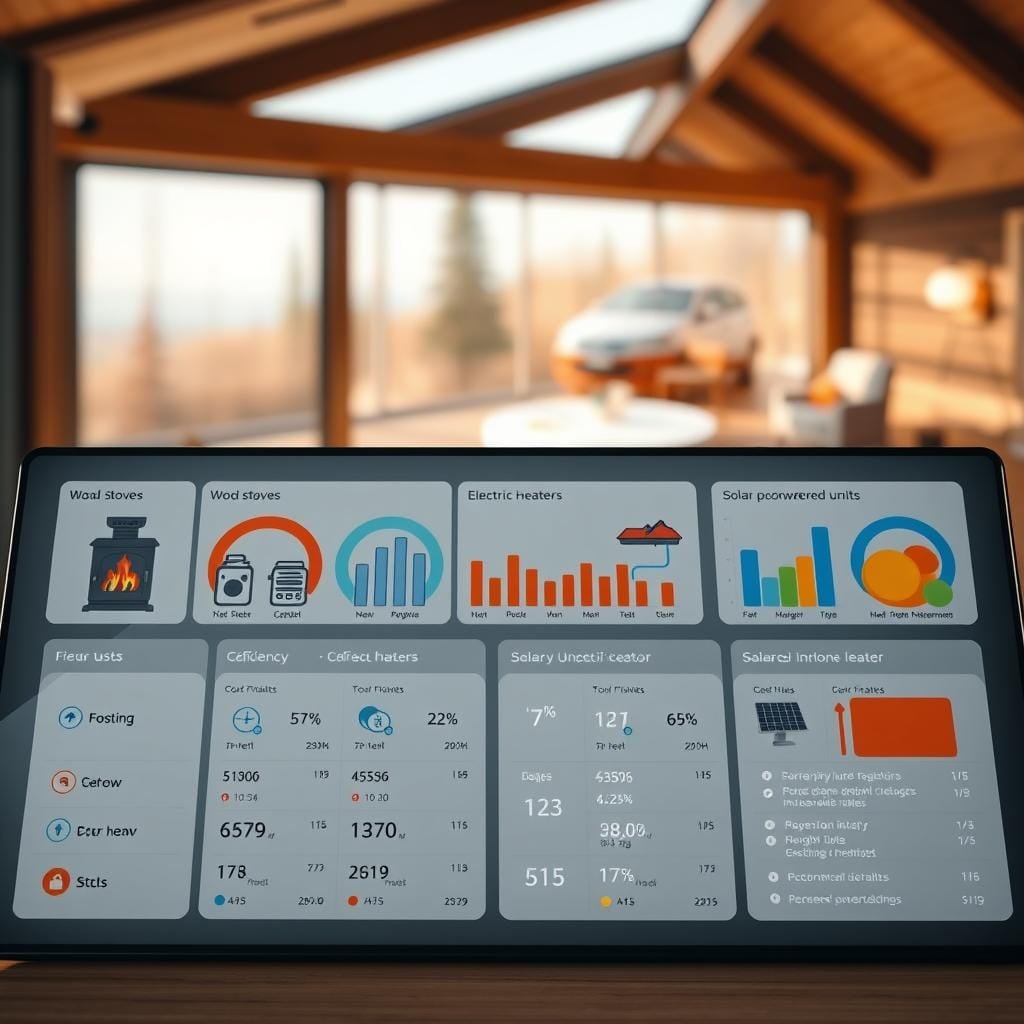
Many property owners face tough decisions when choosing between various warmth solutions. The cheapest upfront option often becomes the most expensive over several years of use.
Natural Gas vs. Electric vs. Renewable Options
Natural gas systems typically range from $2,000 to $3,000 for installation. They offer 70-80 percent efficiency and work without electricity. This makes them reliable during power outages.
Electric heating usually has the lowest installation cost. However, it becomes very expensive to operate over time. This is especially true when relying on generators or battery banks.
Heat pump technology represents a higher initial investment around $4,000. These systems provide both warmth and cooling in one unit. Their efficiency drops significantly when temperatures fall below 5°F.
In extreme cold around 10°F, gas systems maintain consistent performance. Meanwhile, heat pump efficiency decreases dramatically. This makes the cost comparison complex for colder climates.
Renewable options like geothermal require substantial upfront investment. They conserve so much energy that they typically pay for themselves in less than 10 years. Combining multiple systems often provides the best value.
When evaluating your options, consider total ownership cost. Include equipment purchase, installation, fuel expenses, and maintenance. Also think about whether the system operates during power outages.
Wrapping Up Alternative Heating Options and Strategies
Your journey to off-grid warmth culminates in selecting systems that match your specific needs and resources. The right approach balances upfront costs with long-term efficiency and reliability.
Consider implementing multiple alternative heat sources for redundancy. This ensures consistent comfort even during power outages or fuel shortages. Different sizes and type of equipment suit various property configurations.
Strategies to minimize heat loss through insulation are as crucial as the equipment itself. Understanding how systems retain heat helps maximize efficiency. The exact amount heat needed depends on your space’s unique characteristics.
For properties with gas line access, natural gas offers convenient warmth. Remote locations may prefer wood, pellet, or renewable heat sources. Radiant floor systems can efficiently warm a room while reducing energy loss.
Successful off-grid heating combines smart equipment choices with proper installation and maintenance. Your ideal solution provides reliable comfort through thoughtful planning and strategic implementation.
